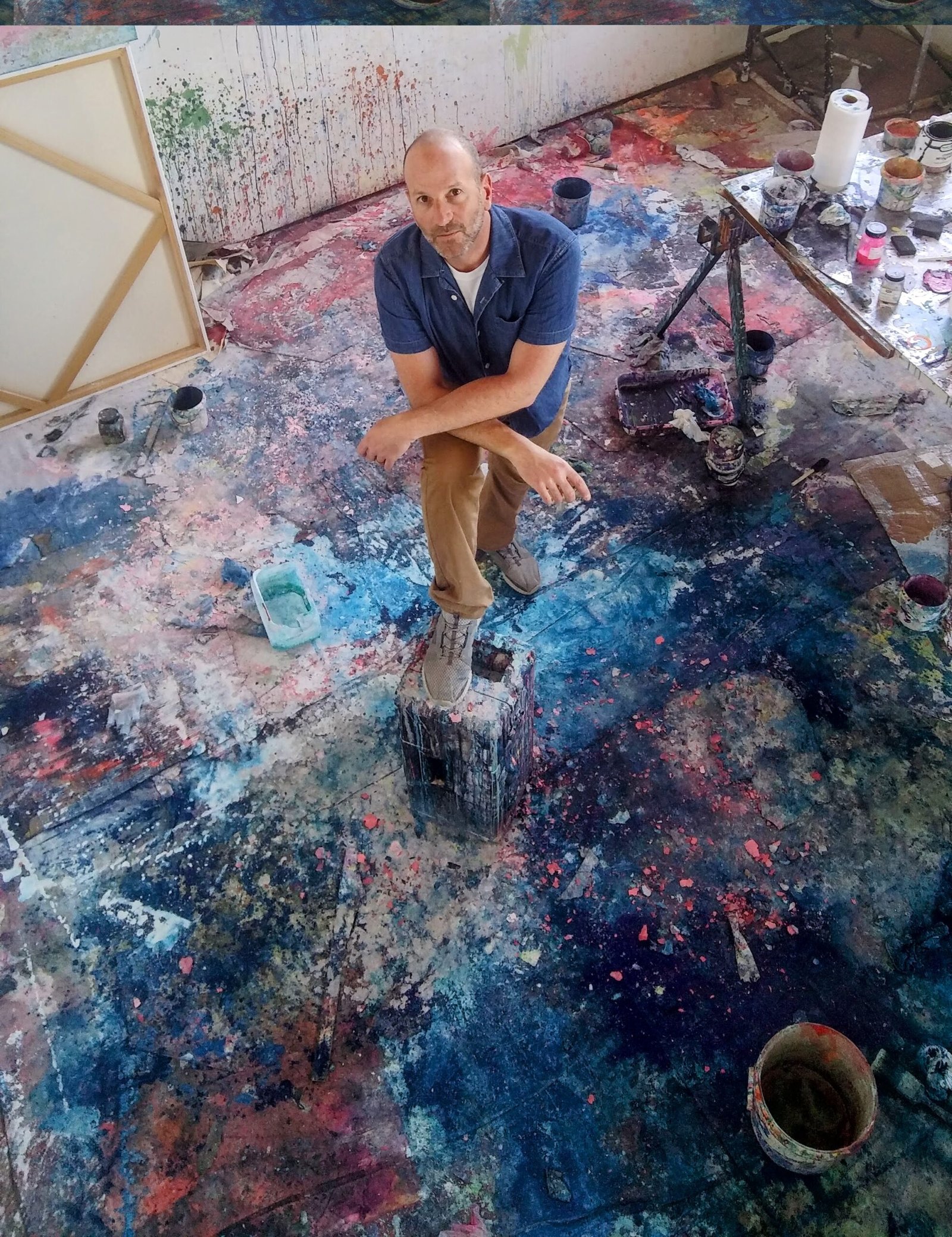The Healing Power of Earth Pigments in Art

Introduction: Why Earth Pigments Matter
For thousands of years, artists have turned to the earth itself for color. Pigments made from soil, stone, and minerals are more than paint—they are memory and medicine, connecting art to landscape, history, and spirit. From ancient cave walls to contemporary mineral-based painting, earth pigments bring warmth, depth, and authenticity thats hard to replicate,t
In my own practice, I work with crushed minerals, iron oxides, limestone plasters, mica, copper, and graphite. These elements shimmer, shift, and hold light differently depending on the time of day. Painting with them is not just creating an image—it is a layered excavation of memory, a meditative process that turns matter into meaning.
What Are Earth Pigments?
Earth pigments are natural coloring substances made from minerals, clays, and soils. Ground into powders and mixed with binders—from traditional egg yolk and linseed oil to gum arabic and modern polymers—they create long-lasting, archival paints and plasters.
Key qualities of earth pigments:
Sourced from natural rocks, clays, and iron-rich soils
Durable and resistant to fading over centuries
Provide soft, muted tones instead of artificial brightness Often safer and less toxic than synthetic paints
Examples I work with:
Iron oxides (ochres): yellows, reds, and browns—the “blood of the earth,” tied to vitality and human story.
Raw umber & burnt sienna: grounding browns and glowing reds, alive with entropy and beauty.
Limestone & marble dust: from Rome to Carrara, used for millennia in frescoes, gesso, and architecture.
Copper & turquoise: oxidizing into blues and greens, breathing time and water into surfaces.
Mica, hematite, even diamond dust and meteorite browns: reminders that painting is as much cosmic as earthly.
Color and texture here become a many-layered language—of seeing, feeling, remembering.
The History of Earth Pigments in Art
Earth pigments are among humanity’s first tools of expression. Prehistoric artists left handprints in ochre on cave walls at Lascaux and Altamira—
symbols of survival and ritual that make us all feel like part of the “red hand gang.”
Across cultures, pigments carried meaning and magic: Cave art: ochre and charcoal telling stories of the hunt.
Ceremonies: pigments painted onto bodies for protection and healing.
Burials: red ochre spread on the dead as a symbol of blood, rebirth, and eternal life.
Temples and frescoes: Egyptians, Greeks, and Romans used pigments and plasters to color sacred spaces.
Symbolic meanings across history:
Red ochre: life force, vitality, and spirit. Green earth: fertility, renewal, and health. Brown umber: grounding and stability.
Pigments were never just decoration—they were carriers of spirit, ritual, and healing.
The Healing Power of Earth Pigments
Earth pigments don’t just color a painting—they change how we feel. Their tones are grounding, calming, and restorative. Unlike synthetic paints that overwhelm the senses, earth tones create balance and belonging.
Why earth pigments heal:
They connect us to soil, stone, and landscape Their colors feel familiar, safe, and elemental They create calm instead of overstimulation
In my practice, mixing pigments and layering washes of plaster becomes a meditation. Each layer is a stratum, a piece of geology revealed on canvas. The act is physical and grounding, but also deeply emotional—a kind of elemental medicine.
Modern Applications of Earth Pigments
More and more artists are returning to earth pigments for their beauty, authenticity, and sustainability.
Today they are used in:
Eco-friendly, non-toxic painting practices Mindful art therapy and wellness workshops
Safe community art projects for children and elders
Murals and interior design that create calming, grounded spaces
Earth pigments like ochres, siennas, umbers, and greens remain timeless because they feel alive. They shift with light, harmonize with nature, and carry history into the present.
Why Artists Are Returning to Earth
In my mineral-based paintings, I use earth pigments to build fossil-like, time-layered surfaces. These works are made from the same materials that built civilizations—limestone, copper, ochres, mica. They hold memory the way we hold story.
For contemporary artists, the return to earth pigments is about more than nostalgia:
Sustainability: they are natural, non-toxic, and eco-friendly Authenticity: textures and tones that no synthetic can imitate
Durability: colors that endure for centuries without fading Choosing earth pigments is choosing to align art with nature, to create work that is both timeless and alive.
Conclusion: Choosing Earth Pigments for Healing and Creativity
Earth pigments remind us that art and nature are inseparable. They are the colors of soil, stone, and memory. They heal the artist through process, and they soothe the viewer through presence.
For me, working with earth pigments is not just about making paintings—it is about creating connection, balance, and lasting value. These materials are reminders that beauty and meaning are layered, enduring, and elemental.
FAQs
What are earth pigments made of?
Earth pigments come from minerals, clays, and soils. Ochres are rich in iron oxide, siennas are iron-rich clays, and green earth comes from mineral deposits. In my practice, I combine them with marble dust, limestone, mica, and copper to create textured, glowing surfaces.
Are earth pigments safe and non-toxic?
They have been used safely for millennia and do not release harmful chemicals like many synthetic paints. The only caution is to avoid inhaling fine dust during mixing. Compared to chemical paints, they are gentler for artists and the environment.
Why do artists prefer earth pigments over synthetic ones?
Earth pigments carry warmth, depth, and authenticity. They shift subtly with light, creating surfaces that feel alive. Synthetic paints may appear brighter, but earth pigments connect art to history and healing. That said, I also enjoy exploring modern synthetics—when combined thoughtfully with natural pigments, they can create powerful, contemporary effects.
Do earth pigments really have healing effects?
Their muted, grounding tones can reduce stress and promote balance. For me, the act of grinding, mixing, and layering pigments is meditative. Viewers often describe my finished works as calming, elemental, and timeless—reminders that art can be as much about healing as it is about beauty.

